|
To see long excerpts from “The Divide” at Google Books, click here.
|
“The Divide: American Injustice in the Age of the Wealth Gap”
A book by Matt Taibbi
Matt Taibbi has come a long way since the 1990s, when he co-edited a riotous expatriate newspaper in Moscow. For five years, Taibbi churned out the Gonzo, Slavic style, mixing satire and pranks with scathing opinion and analysis. Although he also played in the Mongolian Basketball Association, his time abroad wasn’t all fun and games. In the early 1990s, the Russian government began auctioning off shares of state enterprises, which Taibbi described as “the biggest thefts in the history of the human race.” He noted the calamitous effects of privatization on average Russians and scorned the American consultants who descended on Moscow to coordinate the auction. “Looking at their bright, happy faces,” Taibbi wrote, “you’d never guess that these were the people who’d had the balls to tell millions of Russians that their jobs and benefits needed to be sacrificed for the sake of ‘competitiveness.’ ”
Rather than lament the evils of neoliberalism, Taibbi chose to mock the carpetbaggers. “There was no point in fighting fair against people like this,” he claimed in his first co-authored book, “The Exile: Sex, Drugs, and Libel in the New Russia” (2000). “Humorless lefties like Ralph Nader had been doing that for decades, much more effectively and with greater attention than we ever could, to very little result.” He decided to “loathe the corporate henchmen not for what they did, but for who they were.” His goal was to “embarrass them socially, pick on their looks and their mannerisms and speech, expose them as people.”
In 2002, Taibbi returned to the United States with his attitude intact. When an alternative weekly hired him to cover the 2004 Democratic primaries, he struggled to find a satisfactory way to report on the absurdities he witnessed. He began showing up for work on mushrooms or in a gorilla suit; at one point, he played the hunger artist, forgoing food for a week and taking careful notes on what the other reporters were ingesting. Toward the end of his fast, he dropped two hits of acid, donned a Viking costume and tried to interview a campaign staffer.
Again, the Gonzo influence was unmistakable. Taibbi’s first solo book, “Spanking the Donkey: On the Campaign Trail With the Democrats” (2005), was an updated version of Hunter Thompson’s “Fear and Loathing: On the Campaign Trail ’72,” which was praised as the least factual and most accurate account of that presidential race. Taibbi even itemized the contents of his car trunk, as Thompson did at the beginning of “Fear and Loathing in Las Vegas.” It was therefore fitting that Rolling Stone magazine, which helped make Thompson a cultural icon, hired Taibbi as a contributing editor.
Having documented America’s political and cultural atrocities in “Smells Like Dead Elephants: Dispatches From a Rotting Empire” (2007) and “The Great Derangement: A Terrifying True Story of War, Politics & Religion at the Twilight of the American Empire” (2008), Taibbi turned his attention to Wall Street, whose greed, negligence and fraud helped crater the global economy. In some ways, that story was a return to the rapacity he had witnessed in Russia, but Taibbi was even more outraged by the effect of the crash on average citizens — this time, his compatriots. In July 2009, Rolling Stone published his exposé of Goldman Sachs, the investment bank that Taibbi described as “a great vampire squid wrapped around the face of humanity, relentlessly jamming its blood funnel into anything that smells like money.” A few business press regulars challenged the story’s details, and others were put off by its extravagant style. In the end, however, their criticisms were surprisingly weak, attempts to defend Goldman Sachs were risible and subsequent reporting confirmed Taibbi’s basic claims.
Given the number of serious publications that cover Wall Street, it was remarkable that Taibbi’s piece appeared in Rolling Stone. His critics may have hoped the story’s provenance would make it easier to dismiss, but Taibbi cleaned their clocks in print and on television. It was another reminder that Rolling Stone has never been an ordinary music magazine. Before launching it in 1967, Jann Wenner and Ralph Gleason worked at Ramparts magazine, the legendary San Francisco muckraker that ran high-impact stories on Vietnam and the CIA. Taibbi’s piece proved that Rolling Stone knew how to apply the old Ramparts formula, which Adam Hochschild, another alumnus of that magazine and co-founder of Mother Jones, put this way: “Find an exposé that major newspapers are afraid to touch, publish it with a big enough splash so they can’t afford to ignore it, and then publicize it in a way that plays the press off against each other.” The Goldman Sachs story helped revive Rolling Stone’s political coverage, and the magazine has been on a tear ever since, landing two George Polk Awards for investigative reporting in the last four years.
In his next book, “Griftopia: Bubble Machines, Vampire Squids, and the Long Con That Is Breaking America” (2010), Taibbi broadened his attack on high finance. One of his targets was former Federal Reserve Chairman Alan Greenspan, whom business reporters had long revered. When the stock bubble popped in 1999, Time magazine cast Greenspan as a member of the “Committee to Save the World.” Taibbi felt no such reverence; in fact, he regarded the Fed chair’s penchant for deregulation, low interest rates and Wall Street bailouts as an important source of the bubble in the first place. Characteristically, Taibbi made his critique personal. Greenspan was a “gnomish bug-eyed party crasher” who “flattered and bullshitted his way to the top,” and then turned the Federal Reserve into “a permanent bailout mechanism for the super-rich.” But Taibbi did more than impugn his targets; he also explained the intricacies of Wall Street’s labyrinthine hustles to general readers. That combination of bombast and clear explication made his claims increasingly difficult to ignore or refute. Eventually the SEC and Justice Department began to stir. The same year “Griftopia” appeared, Goldman Sachs paid $550 million to settle charges that it misled investors about a subprime mortgage product. It was the largest SEC penalty ever paid by a single firm. Two years later, Citigroup paid $590 million to settle similar claims, and last year, JPMorgan Chase settled with the Justice Department for $13 billion, including a $3 billion penalty for its role in selling low-quality mortgage-backed securities. Despite the immense scale of the subprime grift, none of the major offenders faced criminal prosecution.
The Goldman Sachs story dramatically raised Taibbi’s media profile. But where would he go next? Given the government’s refusal to prosecute Wall Street bankers, it was perhaps natural that he would turn his attention to the legal system. In his latest book, “The Divide: American Injustice in the Age of the Wealth Gap,” Taibbi explores why Wall Street bankers are seemingly exempt from criminal prosecution, even as New York City targets petty crime — much of it manufactured by police in minority neighborhoods — more aggressively than ever. He cites statistics to make his argument, but mostly he reports on specific cases. One involves a working-class black man who finally decided to fight a misdemeanor charge for blocking pedestrian traffic — that is, standing on the sidewalk in front of his home. Taibbi also considers the zeal with which government agencies investigate and humiliate welfare recipients and undocumented residents for trying to provide for their families during hard times — times made all the harder because of unprosecuted crimes at the top of the economic food chain.
Everyone knows the rich receive special treatment in this country, especially in court. But Taibbi concludes that the government now offers a sliding scale of civil and criminal protection to U.S. residents. At one end of the spectrum, the very rich are virtually beyond accountability, no matter how massive and destructive their crimes may be. At the other end, the nation’s most vulnerable residents face unremitting investigation and prosecution by bureaucracies determined to find them guilty of something.
Taibbi also surfaces a new set of targets: Justice Department prosecutors who seek settlements for even the most outrageous white-collar scams. Many of them are recruited from law firms whose clients include the largest Wall Street banks. Lanny Breuer, who headed the department’s criminal division when the financial meltdown occurred, is Taibbi’s poster boy for this conflict of interest. Both he and Attorney General Eric Holder were partners at Covington & Burling, which represents JPMorgan Chase, Bank of America, Citigroup and Wells Fargo. All too often, Taibbi argues, the prosecutors have continued to behave like defense attorneys. When Holder was a Clinton administration official, for example, he wrote a memo arguing that prosecutors should consider “collateral consequences” when determining whether to charge persons or corporations. If a criminal prosecution would unduly harm innocent shareholders and employees, the logic went, it made more sense to settle. But once bankers realized they were beyond criminal prosecution, the incentives to transgress increased dramatically.
Taibbi illustrates the Justice Department’s “complete regulatory surrender” by briefly recounting the Hong Kong and Shanghai Banking Corporation case of 2012. HSBC admitted to laundering billions of dollars for Mexican and Colombian drug cartels, accepting $500,000 per day from Russian mobsters, working with banks connected to al-Qaida and facilitating deals with the sanctioned state of Iran. At a news conference, Breuer proudly announced that HSBC would pay a fine of $1.9 billion — less than 10 percent of that bank’s earnings for a single year. “I don’t think the bank got off easy,” Breuer said. A dubious Forbes magazine asked, “What’s a bank got to do to get into some real trouble around here?” The New York Times agreed: “Clearly, the government has bought into the notion that too big to fail is too big to jail.”
It got worse. When Swiss banking giant UBS was nailed for rigging Libor rates, which affected the price of trillions of dollars worth of financial products, Breuer lamely defended the $1.5 billion settlement at a news conference before Holder stepped in. “I’m not talking about just this case,” Holder said, “but in others we have resolved, the impact on the stability of financial markets around the world is something that we take into consideration.”
As with the Goldman Sachs story, other journalists have confirmed Taibbi’s major claims. Writing for Salon, David Dayen called attention to an article in American Lawyer that congratulated Covington & Burling for allowing its banking clients to escape justice “with very little damage.” One client “got off with just a $5 million fine,” while another “was fined just $75,000” for allegedly misleading investors about the firm’s subprime exposure. The article even quoted Breuer, who returned to Covington & Burling after his stint in the Justice Department. “Marrying regulatory expertise with white-collar lawyers is an extraordinary advantage,” Breuer said. For Dayen, the American Lawyer piece was a teachable moment. “Ex-regulators like Lanny Breuer can make millions defending the clients they used to regulate,” he wrote. “And with few exceptions, it’s all perfectly legal. We just don’t usually get to see the scheme displayed so obviously and transparently as it is in these marketing materials.”
In her New York Times column, Gretchen Morgenson also highlighted the Justice Department’s kid-gloves approach to Wall Street fraud. Citing a report by the department’s own inspector general, Morgenson noted that the FBI ranked complex financial crimes as the lowest priority of the six criminal threats within its area of responsibility. Moreover, the same report ranked mortgage fraud as the lowest threat within the complex financial crimes category. That report, Georgetown law professor Adam Levitin said, “confirmed what’s been clear for quite a while — that the D.O.J. has never taken mortgage fraud seriously.” Breuer declined to comment for Morgenson’s piece, but former Delaware Sen. Edward Kaufman, who now teaches law at Duke University, was more forthcoming. “The report fits a pattern that is scary for a democracy, that there really are two levels of justice in this country, one for the people with power and money and one for everyone else,” Kaufman said. “And that eats at the heart of what I think makes this country great.”
“The Divide” marks a shift in Taibbi’s tone. More Lincoln Steffens than Hunter Thompson, Taibbi drops most of the histrionics to reveal the corruption and injustice at hand. He even goes out of his way to be reasonable. He acknowledges that prosecuting financial cases can be expensive and risky, especially when the alleged crimes are complex and the defendants have vast legal resources at their disposal. That fact motivates prosecutors to settle such cases rather than try them in criminal court. He also concedes that many disadvantaged neighborhoods may benefit from tough policing. But he maintains that when combined, the two law-enforcement strategies add up to a glaring injustice. He also notes that it’s far too easy to introduce jurisdictional complications in financial cases that would never be allowed in less consequential cases. To make that point, he recounts a horrific case in which high-profile Wall Street financiers escaped punishment after trying to destroy a company they bet against as well as harassing its executives and their family members.
Taibbi’s is an important voice, especially in today’s media ecology. Support for investigative reporting has never been a given; when it comes to muckraking, you take it where you can get it. Taibbi has shown that he can deliver the goods, and “The Divide” is his most important book-length contribution to date. One wonders what the future holds for him. In February, he announced he was leaving Rolling Stone to join First Look Media, where his website will feature investigative stories with a satirical edge. In describing his new venture, he linked his Russian experience to his current interests. “There was a certain kind of corruption that I got to see up close in the ’90s,” he said, “and I think that a version of it is being repeated here in the United States.”
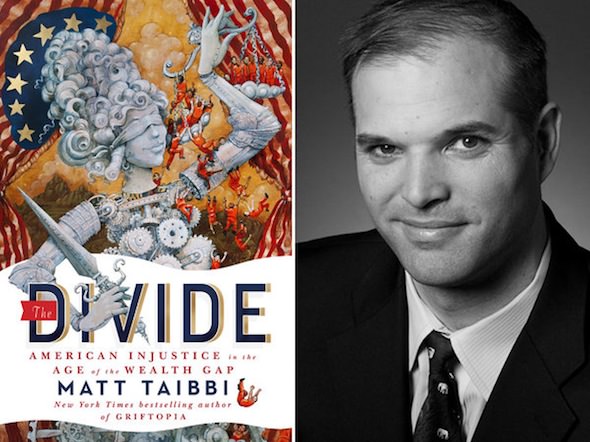

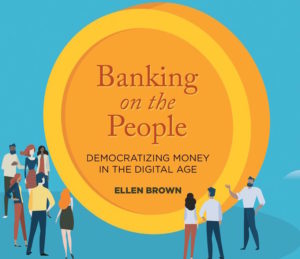
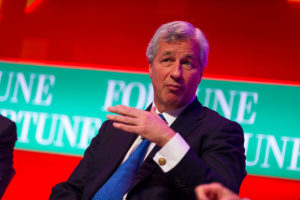
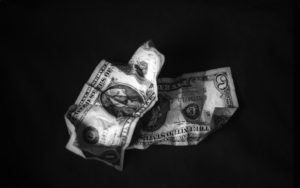
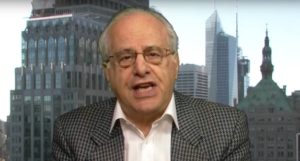
You need to be a supporter to comment.
There are currently no responses to this article.
Be the first to respond.